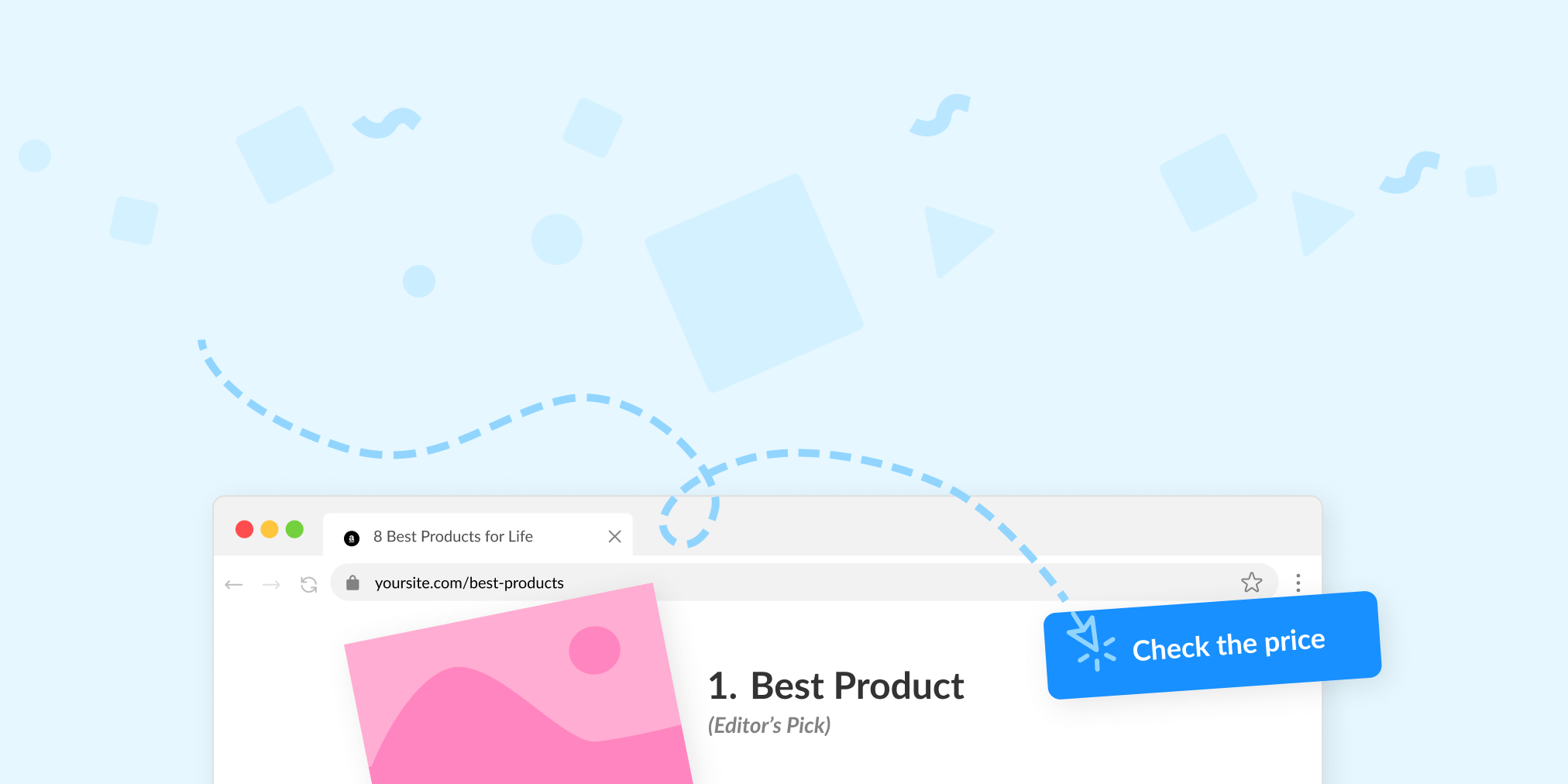How to Write a Great Product Roundup Article in 5 Steps
Product roundups, also known as "best product reviews", are one of the most popular types of content for affiliate marketing.
With a little optimization, these articles convert like crazy. Each article can earn you hundreds or even thousands of dollars per month, with a little bit of effort.
Even better, a good product roundup template can be reused across articles. This makes them easier to create, replicate, and optimize. You can test changes in one post, which can be rolled out to others after you see positive results.
Plus, they convert better and are almost always more profitable than even the most optimized product review template.
Want to learn how to create a high-converting product roundup article that attracts quality clicks and drives affiliate conversions all year long? Read on to learn:
- What is a product roundup?
- 3 reasons to write product roundups (instead of individual reviews)
- How to write a product roundup review article
- How to optimize an existing product roundup for conversion
What is a product roundup?
A product round up is an article on your blog, a social media post, or an email that features several products in the same category or according to a theme. As the reviewer, it's your job to evaluate each product and help your readers make an informed buying decision.
Done right, product roundups not only drive excellent affiliate commissions, but are genuinely useful to your audience.
Here's an example of a product roundup post:

In this product roundup article by Outdoor Gear Labs, the authors are evaluating 9 different messenger bags, selecting the overall best product, and share the metrics they used to make the decision.
Here are a few more real-world examples to make it concrete:
- Best Website Builder 2021: I've Reviewed the 16 Best (& Worst)
- Top 16 Best Hiking Backpacks in 2021 [Tested & Reviewed]
- The Best Coffee Grinders for Brewing Everything ...
You get the gist. Most roundups include the word "best" or "top" in the title, and promise the reader they'll be presented with only products of the highest quality.
TYPES OF PRODUCT ROUNDUPS
There are many types of product roundups besides "best product reviews". Curated lists, seasonal or holiday guides, gift guides, lists of brands or experiences, even a collection of discounts and time-sensitive deals can be seen as product roundup examples.
"Best product" keywords can get competitive. Don't forget to think about different angles with the same buyer intent when doing your affiliate keyword research.
Now for a question: why should you create product roundups, instead of just reviewing individual products? Aren't readers of reviewers even more primed to buy than those reading product roundup lists?
Turns out, product roundups will almost always help you make more money as an affiliate publisher. Here are three reasons why.
3 reasons you should write product roundups (instead of individual reviews)
It might seem logical that someone closer to conversion has already read product roundups, and has moved on to individual reviews. So investing in reviews means you're more likely to earn the click that results in a sale. Especially in an affiliate program with a last-click attribution model.
But the opposite is true: Product roundups are simply more profitable than individual reviews. Especially when you consider that they take roughly equal effort to create.
Here are three key reasons:
1. Higher search volume
Most of the time, the search volume for "best [product category]" will be higher than that of any individual products on the list. But this isn't so surprising when you think about the buyer's journey:

There are simply more people in the Awareness phase, who looking to purchase a type of product, than people who have already narrowed their search down to a specific product by a specific brand.
Here are some examples with global search volumes pulled from Keywords Everywhere to give you an idea of how dramatic the difference can be:
- "best air fryer" (301,000 per month) vs.
- "Ninja Air Fryer Max XL" (40,500 per month) vs.
- "Ninja Air Fryer review" (2,400 per month)
- "best coffee grinder" (33,100 per month) vs.
- "Baratza Sette 270Wi" (6,600 per month) vs.
- "Baratza Sette 270Wi review" (210 per month)
- "best hiking backpack" (12,100 per month) vs.
- "Patagonia Black Hole" (6,100 per month) vs.
- "Patagonia Black Hole review" (140 per month)
There are counterexamples, but by and large, you can get much more traffic to your affiliate content by writing product roundups instead of standalone reviews.
SEO TIP
Apart from the higher search volume, product roundups are great for targeting longtail roundup keywords without writing an entire article about it. Here's an example for the keyword "best hiking backpacks":
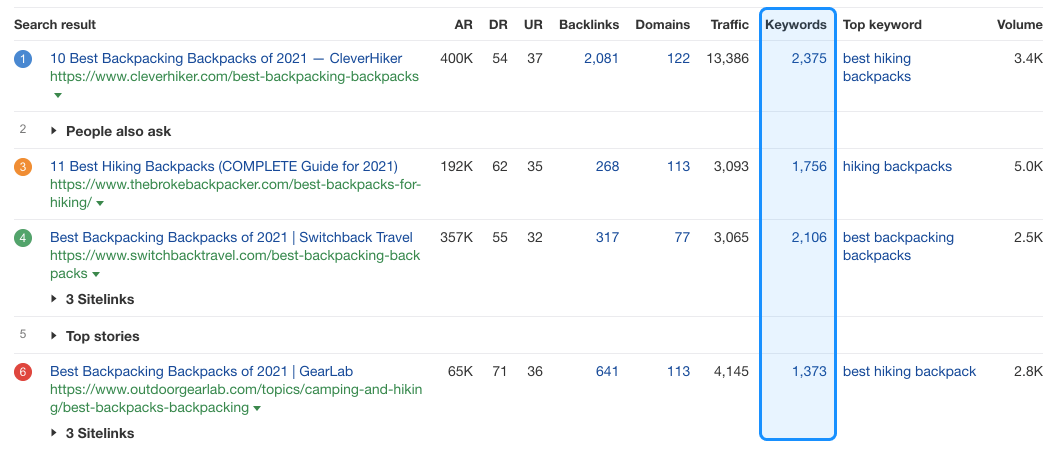
In this case, the top article by CleverHiker ranks for over additional 2,300 keywords. With a single article, they're grabbing Position 1 for great terms like "ultralight backpack", "lightweight backpack", and "best backpacking backpacks."
Product roundups aren't just efficient from an affiliate revenue standpoint. If you monetize your site with ads, they'll boost that revenue by attracting extra traffic as well.
2. Easier to keep up-to-date
Keeping content somewhat fresh is usually an important factor for product roundups. New products and models are regularly released, and readers want to make sure they're not getting an outdated version.
But what happens when the version of the product you've reviewed is superseded by a new one? With a dedicated product review, you have to update the entire article. Especially if the changes are significant. Producing new photos and copy can be expensive and time-consuming.
With a roundup, you only need to update the relevant section. At worst, you can remove the product from the list and replace it with something else.
3. Product roundups just convert better
Finally, and most importantly, product roundups convert better and result in more revenue — even adjusted for traffic differences. Here's a look at how RPM (revenue per 1,000 visitors, based on affiliate sales) varies between product review content vs product roundup content.
Check out these two screenshots from a site using Affilimate:

Product review content has consistently lower click-through rate (CTR), lower RPM, and result in lower revenue. But compare that with product roundups — it's like night and day:
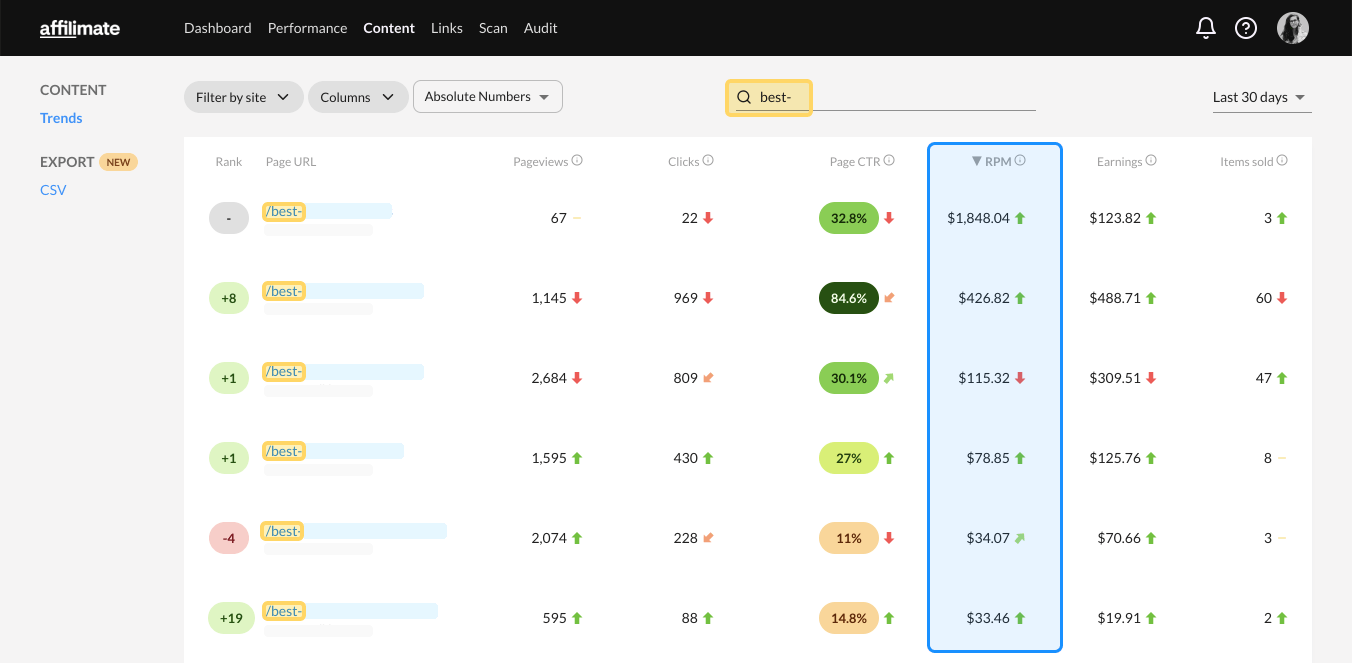
Better CTR, better RPM, more traffic, and more earnings. All in the same product category!
Why is that? Here's my theory:
Product review readers are already too informed to click your affiliate links.
They might already have Amazon or another retailer's website open in the other tab. They're just doing a little due diligence before buying — without interacting with your content.
That's why the click-through rate is so low.
While they might be closer to the buying decision, getting a review-reader to click your links — and therefore place an affiliate cookie — is much harder.
On average, earning a click from a product review is 2-3x harder than from a product roundup.
Convinced that your time is better spent on product roundups?
Here are the 5 things every product roundup should have to maximize conversions.
How to Write a Product Roundup Review Article
Once you get the hang of it, writing product roundup articles is pretty easy. You don't need a lot of special tools or plugins to create them. But you do need some conversion copywriting skills, and to empathize with your reader.
Here are the 5 steps to creating a good product roundup post:
- A click-worthy title
- A concise, authoritative intro
- Product comparison table
- Individual product reviews
- Buyer's guide
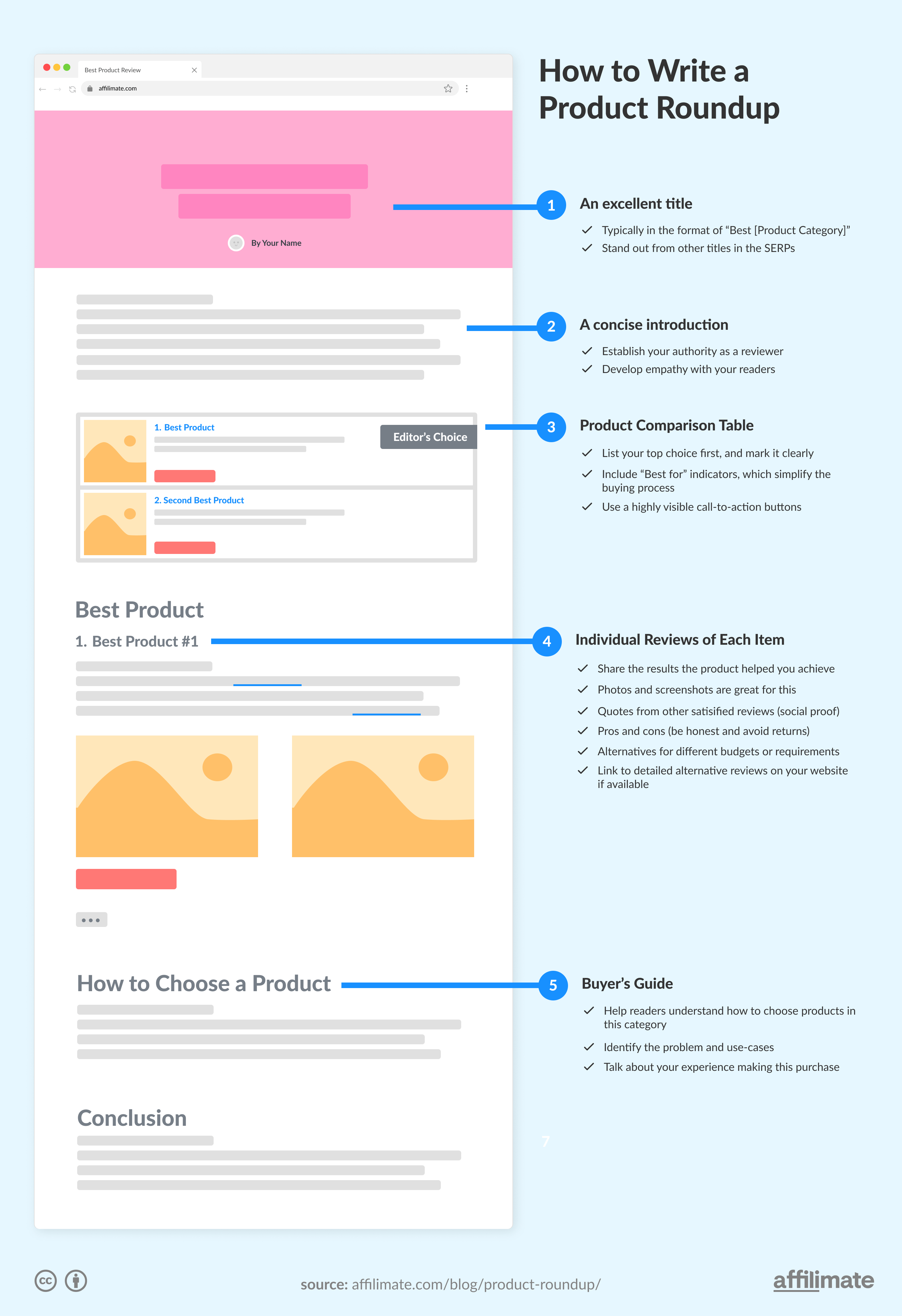
1. Choose a click-worthy title
Whether you're ranking content organically, running ads, or even sending an email to your list, the best product roundup is pointless unless you do one thing first.
And that is get your prospective reader to click a link to read your post.
There's an adage in copywriting that you should spend 50% of your time on the content, and the other 50% on a headline. It sounds like a lot, until you remember that despite what Google says, click-through rate is probably a ranking factor.
This is why it's so important to have a great title for your product roundup. Here's an example of what I mean.

Here are a few more title formulas you can use for product roundup posts:
- [Number] Best [Products] for [Type of People]
- Example: 8 Best Android Tablets for College Students
- [Number] Best [Product] for [Desired Result]
- Example: 10 Best Dutch Ovens for Even Cooking
- [Number] Best [Product] in [Current Year]
- Example: 7 Best Digital Cameras in 2021
While these formulas are helpful, getting creative (like the example above from Website Tool Tester) will help you stand out in the SERPs and spark interest in your assessment.
To be fair, there are lots of counterexamples to this point. Take for example, the very utilitarian headlines from Outdoor Gear Lab:
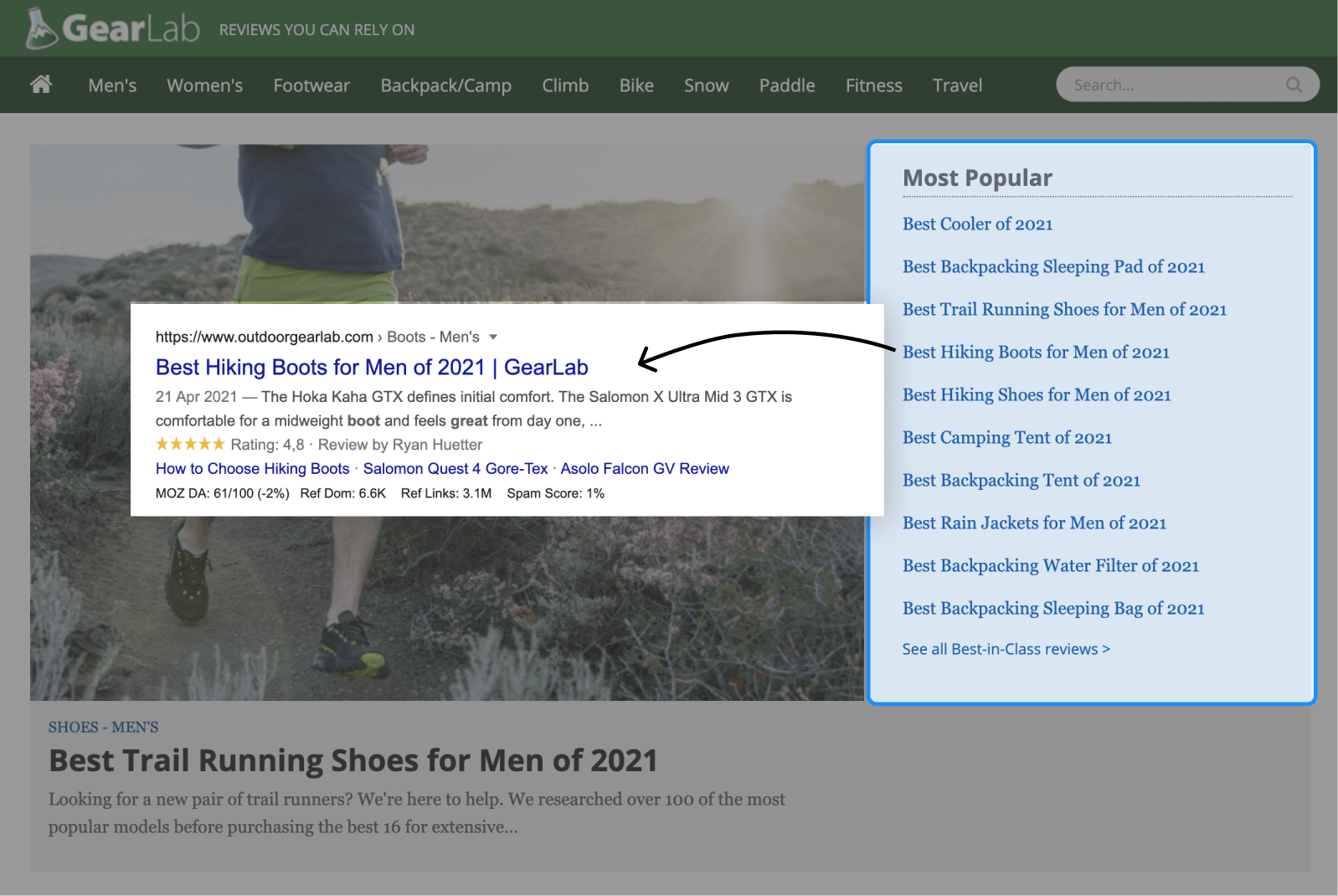
For these "Me too"-style SERPs, where everyone is essentially using the same title, you may need to stand out in other ways. Above, you'll see product review structured data being used for the first product in the list (hence the highly visible star-rating).
Now that you've earned the click, it's time to explain: why listen to you?
2. Create a concise, authoritative intro
Here's the thing: most people who land on your product roundup post have probably never heard of you before. So why should they take your advice?
Your intro paragraph's main job is to establish that you're an expert on the topic or product category.
This is in line with the guidelines from Google's Product Review update, released in April 2021:
The overall focus is on providing users with content that provides insightful analysis and original research, and is written by experts or enthusiasts who know the topic well.
So, how can you demonstrate to both visitors and Google that you're an expert or enthusiast? Here are a few ways to build a good rapport with your reader:
- Identify yourself as the author early in the piece
- Use a picture of yourself, especially with or using the product (or screenshots)
- Make jokes, be self-deprecating, get readers to like you!
- Explain why you're an expert on the topic and qualified to make the review
- Empathize with the pain points readers are probably coming to you with
- Address those concerns directly, without being overly positive or salsey
- Have a clean website design and basic, memorable branding
3. Product Comparison Table
Product comparison tables are super important. They help readers orient themselves early-on in your article to the choices you'll be presenting. It also lets them choose their most important criteria — for instance size, weight, battery life, etc. — and make a preliminary judgement on which product in your roundup is best for them.
And there's no better place to learn what belongs in a product comparison table (or a sales page, for that matter), than the King of Ecommerce: Amazon.
Here's a look at their comparison table for Kindle e-readers:

Amazon has figured out which criteria people care about most when buying an e-reader: ratings and reviews of other customers, screen size, storage, weight, and so forth.
Even for criteria where each model is the same (such as the "glare-free" screen), they include this to make it clear that this key pain point will by solved by any of their products.
So how do you decide what to include in your product comparison table? Here are a few techniques.
How to decide what goes in a product comparison table
The easiest way — apart from using your own intuition and experience – is to simply look at the advertiser's website.
So for example, if you're writing an article about the "best backpacking tents", head over to REI.com and find out what kinds of search filters they offer in this category:
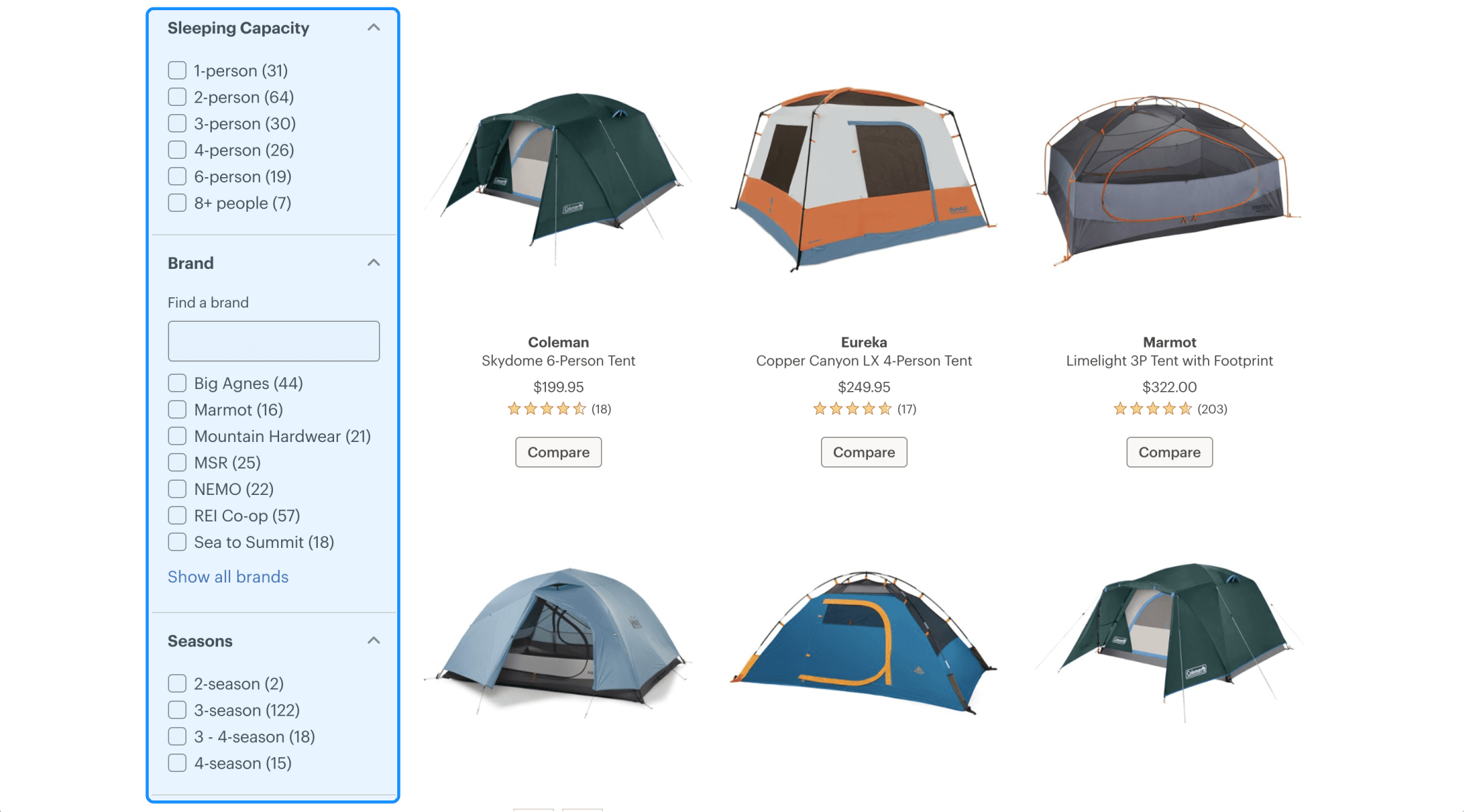
Instantly we discover the most important criteria for buyers: sleeping capacity, brand, seasons, weight, features, use-case, design-type, number of doors, and obviously price.
From there, we want to address concerns people typically have. In the case of tents: Is it going to collapse on me in the middle of the night? Does it ventilate well? Will I be able to stand up inside?
Here's what that looks like in an article by Popular Mechanics:

You don't need a giant matrix to guide readers to the perfect product in your roundup. Figure out the top pain points (in this case, size, budget, and weight) and make it clear which are the top performers according to those metrics.
Here are some more things every product comparison table should have:
- Name of the product
- Clickable images for each product
- Clear designation of your top pick
- Alternatives, with hints towards who they're "best for" (e.g. "best for budget")
- Bold call-to-action button, which ideally contrasts with the rest of your site
That last point is 100% the most important one, because there is a high chance these will be the most-clicked elements on your entire page.
Common and effective affiliate CTAs include "Check price", "Read reviews", "See more photos", "Check availability", "Check current price", and so forth. Short, concise CTAs that promise tantalizing new information just beyond the click.
ALTERNATIVES TO A COMPARISON TABLE
By the way, you don't need a comparison table if it doesn't quite make sense for the products you're reviewing. In many cases, a simple bullet point list will also work.
Just don't make the mistake of simply listing products. Include an anecdote or other helpful buying criteria to entice readers to click. Here's a solid example:

This list is easy to skim, and includes plenty of use cases. The clear contrast of the link text is also effective. In some cases, bullet lists can be handy for SEO and picking up longtail keywords.
4. Individual Product Reviews
I've already written a detailed product review template, which explains in detail which elements you need to help readers make a buying decision right on your website. So, head over there for a comprehensive overview.
If you're wondering what exactly you should write about, here's my grab bag of ideas for what to include in a product review:
What to include in a product review
- Key specs and product description. You've got to cover the basics. What is the product, how does it work, what are the main specs that distinguish it from alternatives.
- Describe your personal experience with the product. Whenever possible, speak in the first person. Don't distance yourself from the product using passive voice.
- If you recommend the product, make it obvious. Phrases like "highly recommend", "favorite", "personal recommendation" near a link improve click-through rate and ultimately conversion.
- Persona of the ideal customer. What kind of person is this product best for? Simplify the specs into key personas, that make it easy for people to read and say, "That's me."
- Results the product helped you to achieve. Including screenshots and unique photos is extremely effective. Before and after shots also work great.
- Social proof from others. Reviews or testimonials you found online can work well for this. For example, ratings from TrustPilot or Capterra, or Amazon for consumer products. You can even link to "Reviews" as a way to earn your click if the reviews are on the advertiser's website.
- Pros and cons. Be honest about the product's shortcomings. Failure to do so results in returns, lost commissions, and savvy customers will see through it.
- Address common objections. Break down objections someone might have before they get a chance to ask. Checking questions on Amazon or in forums like Reddit are great places to get an idea of the types of questions to answer.
- Alternatives for different budgets or requirements. Include links to similar products but for slightly different needs, for example budget-conscious consumers.
- A link to a detailed, individual review. If you've written a detailed review on the specific product, you can link that at the end after you've provided a number of direct links to the product itself.
- Plenty of text links. Don't just link the product name. And don't just link once. Give the reader multiple opportunities to click without overwhelming them.
Each individual product review doesn't need to be super long. You don't want people to get tired of reading if the first product isn't a fit for them.
Vary the presentation with copy, images, and call-out sections that are visually distinct. The article should be well-structured so people can scan through and find what they're looking for, even in a 2,000-4,000 word article.
TIPS FOR GREAT AFFILIATE LINK ANCHOR TEXT
Text links can convert incredibly well, and will most likely lead to the lion's share of your affiliate commissions. Even if they may sometimes attract fewer clicks than a big, bold button.
That's because the surrounding copy compels the reader to click-through and primes them even better for conversion.
Here are a few effective ways to promote affiliate links in your post with text links, besides simply using the product name:
- ...can also recommend this particular [product category] — By not naming the product you're linking to, readers need to click through to see the recommendation.
- ...with over 1,000 glowing reviews on [advertiser site] — If the reader hasn't checked out reviews on the advertiser site yet, this is a convenient click for them.
- ...find more pictures on [advertiser site] — Depending on the product, images can be extremely important. Promising more photos behind the link can compel people to click.
5. Buyer's guide
Finally, you can wrap up with a buyer's guide. This doesn't necessarily need to long, though it can be depending on the keywords you are competing for.
A buyer's guide could include:
- Key considerations when purchasing a product in this category
- If you tested the product, what you looked for in tests and your methodology
- How to use the product for beginners
- Price range for products in this category
- Most popular brands, makes, or models
- Key terminology needed to understand product models
All the while, you can continue dropping links to your most highly recommended products according to each of the metrics you considered on the path to your top choice.
If your buyer's guide is on the shorter side and just a few paragraphs, you can also place this after your comparison table and before your individual reviews.
This can work well if there are just a few key terms or bits of information someone will need before feeling confident enough to click-through — instead of opening another tab to google some terminology you didn't explain.
Here's how that looks when Food and Wine reviews coffee grinders:
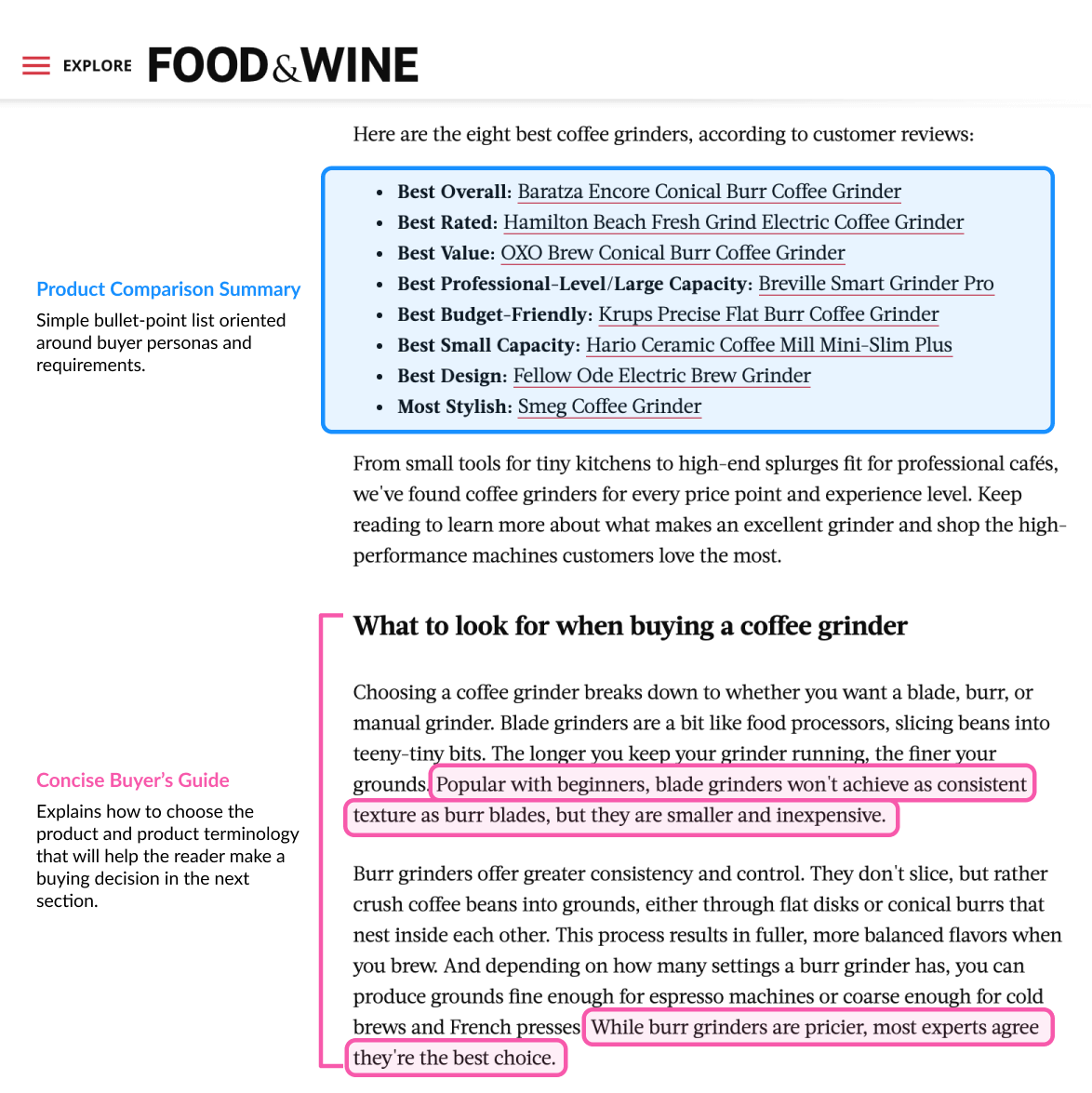
To make an informed decision, readers need to understand the difference between blade and burr coffee grinders. This helps explain price differences readers will encounter as they click-through the recommendations in the list.
How to optimize an existing product roundup for conversion
After you've put your product roundup live — and it starts to rank or you send it to your email list — you'll probably start to see some clicks and sales.
But your job isn't over yet.
Often, small tweaks can take an article from a handful of sales to driving significant revenue. But you need to be able to attribute your conversions back to which links, buttons, and images are actually responsible for them.
One way to do that is to use simple, click-based tracking with tools like Hotjar. The main problem is, clicks and conversions aren't the same thing on most affiliate websites. Different links lead to different products, and different commissions.
That's where Affilimate's Conversion Heatmaps come in. You can use them to figure out which affiliate marketing strategies in your content are leading to actual revenue.

Then, once you make a change to your page, Affilimate will start tracking new clicks and sales to a separate version. So you can find out whether your optimizations actually made a difference — not just in terms of clicks but money in the bank.

For our recommended workflow, check out this tutorial on how to optimize a product roundup.
That's a wrap
Product roundup posts are awesome. They can be an excellent resource for your readers, and lead to significant revenue for your affiliate business.
Product roundups are also one of the most efficient forms of straight up affiliate content that converts readers without a more complex affiliate marketing funnel.
If you're producing product roundup posts today and want to get more out of the ones you've already created, start your free 15-day trial of Affilimate's analytics tools for affiliate publishers by clicking here. No credit card required.
Til the next one! And in the meantime, happy tracking.
